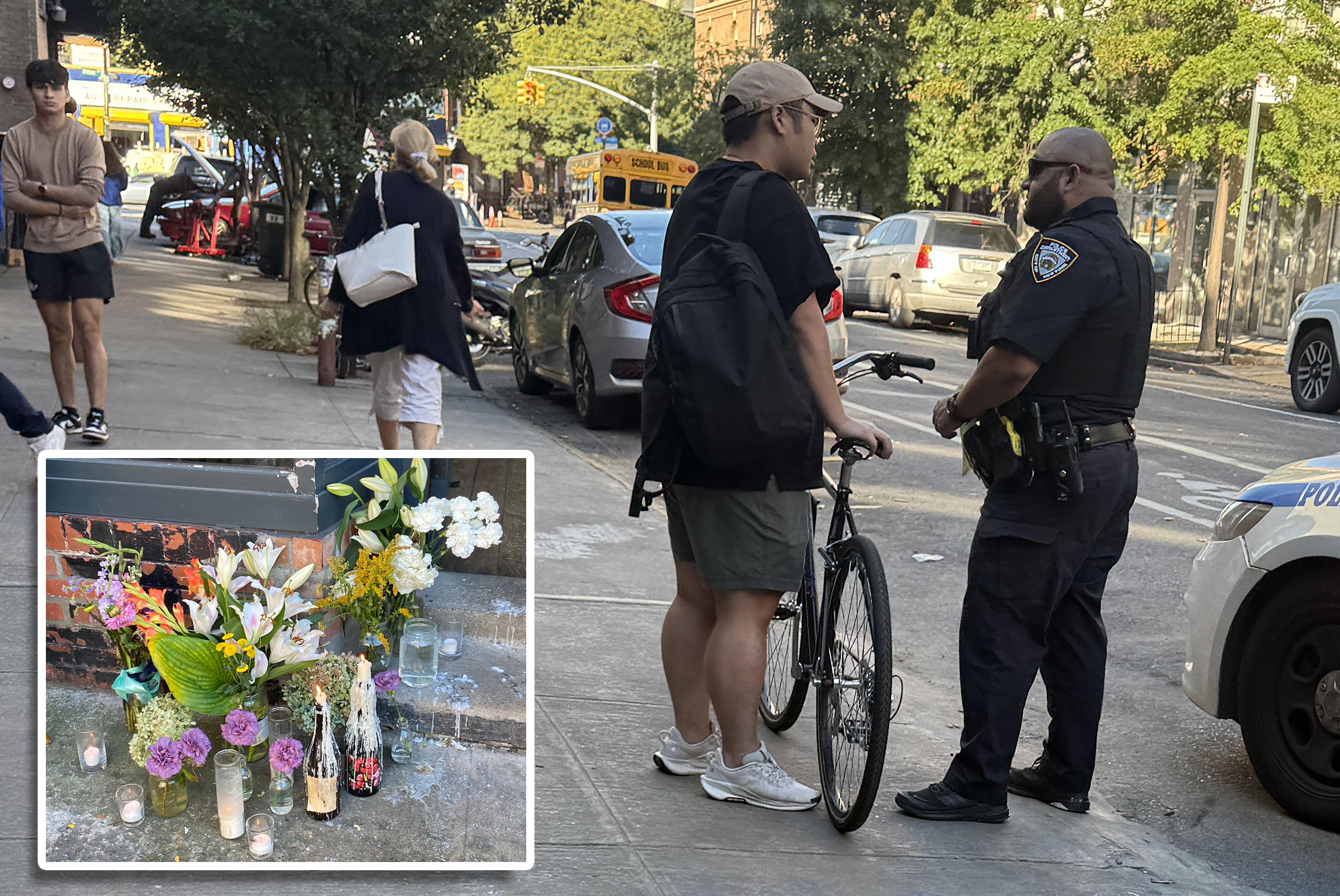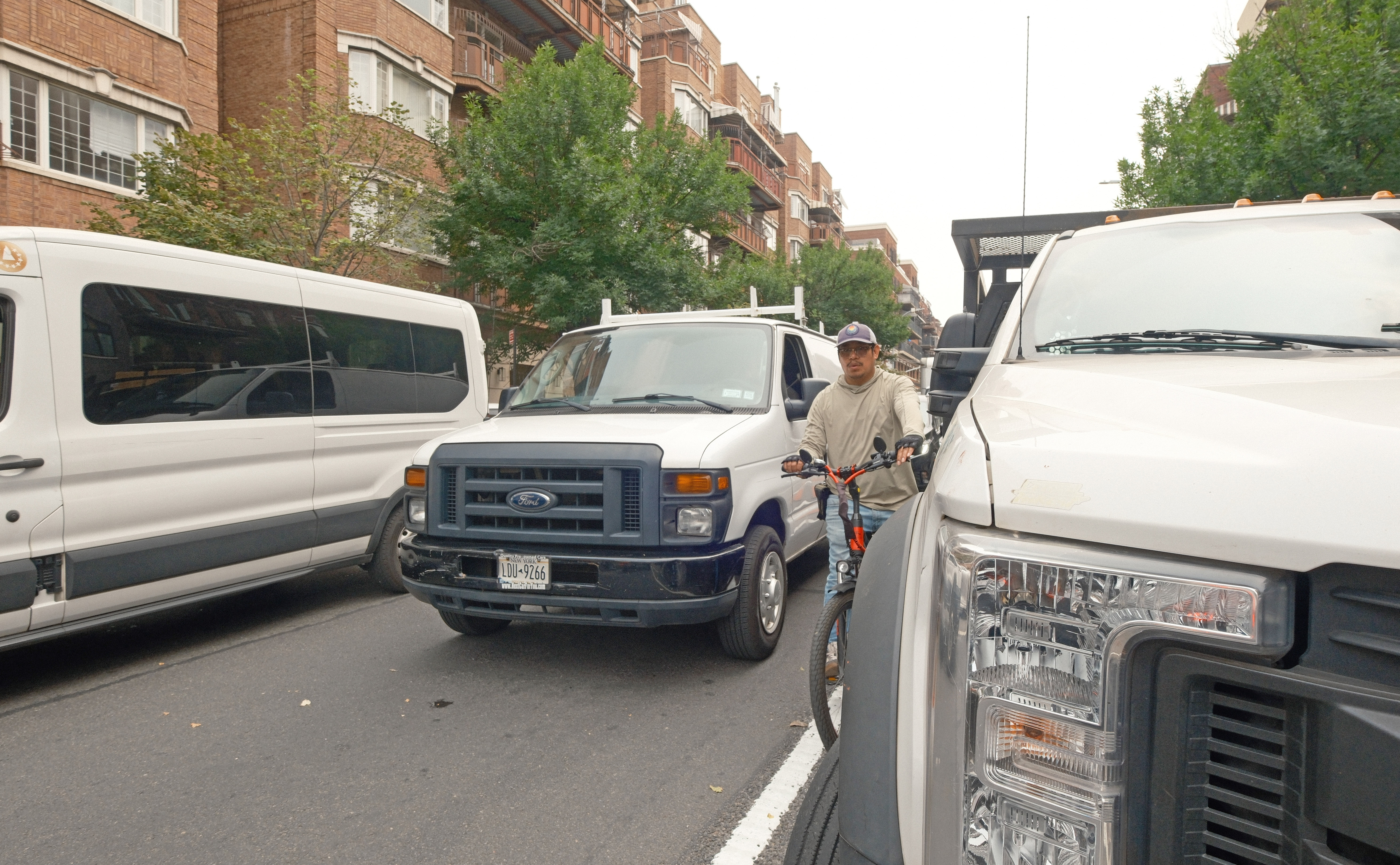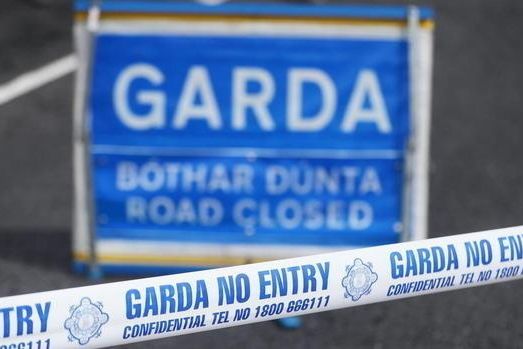#cyclist-safety
#cyclist-safety
[ follow ]
#urban-planning #bike-lane #traffic-incident #vision-zero #brooklyn #road-safety #bike-lanes #illegal-parking #nypd
fromStreetsblog
1 month agoCoke Ain't It! Streetsblog Editor Snorts in Protest As Fed Agents Seize Bike Lane Again - Streetsblog New York City
Officers with the federal Drug Enforcement Administration are again parking cars in the bike lane on 10th Avenue, returning like junkies seeking a fix even after the city tore up and repaved the roadway earlier this month. On Monday, with fresh pavement practically still warm, DEA agents' cars still filled the curbside lane between 16th and 17th streets even though it was clearly marked as a bike lane. The cars blocked safe travel for cyclists, forcing them into traffic and close to passing cars.
New York City
fromwww.npr.org
2 months ago8 walking and biking safety tips that just might save your life
They're a crucial part of pedestrian and cyclist safety, and more people should practice them, says Ryan Sharp, a transportation consultant with Alta, a transportation design firm. "It means paying attention to your surroundings and having a constant awareness of the environment so you can anticipate potential hazards," he says. Because if you're a biker or a pedestrian and you get hit by a car, you're likely to be the more injured one.
Public health
fromStreetsblog
3 months agoAlameda Prioritizes Drivers, Removes Slow Streets Barriers Near Schools - Streetsblog San Francisco
Drivers keep driving through Santa Clara as a detour around Central Ave construction. We don't have any signage like other intersections along 5th St or like when construction began. We don't have any enforcement like in April. It's worse than ever. There are fewer people using the streets, instead only more drivers. Kids are afraid to ride bikes and scooters off of the sidewalks.
Public health
fromStreetsblog
4 months agoDOT Stands By Astoria Safety Project Despite Foes' Anti-Bike Lawsuit - Streetsblog New York City
The Department of Transportation is committed to implementing traffic calming and protected bike lanes under the elevated tracks in Astoria, enhancing cyclist and pedestrian safety.
Alternative transportation
fromStreetsblog
4 months agoWaste of Time: Full-Salaried NYPD Cops Now Needed to Enforce the Unprotected Bedford Avenue Bike Lane - Streetsblog New York City
"Officers from the 79th Precinct were busy trying to save cyclists and bust illegal parkers on the newly unprotected stretch of Bedford Avenue, but had to stop issuing summonses because they ran out of them."
NYC politics
fromStreetsblog
4 months agoThursday's Headlines: Bedford Demise Edition - Streetsblog New York City
The Adams administration intends to make cyclists less safe on Bedford Avenue by beginning the process of scraping away a protected bike lane that has improved safety for all users.
Alternative transportation
fromianVisits
4 months agoBarbican tunnel to prioritise cyclists and pedestrians in clean air plan
The Bunhill, Barbican and Golden Lane Healthy Neighbourhood Plan aims to improve local air quality by restricting traffic access in the Beech Street tunnel, prioritizing cyclists and local traffic.
London politics
fromStreetsblog
5 months agoDOT Testimony: Removing Bedford Ave. Bike Lane Will 'Reduce Safety' - Streetsblog New York City
DOT has stressed that removing the protected bike lane will not eliminate cyclists; rather, it will compromise the safety of all street users. This represents a clear breach of the Vision Zero initiative's goals, putting the city at legal risk for knowingly reducing safety on crucial corridors.
New York City
[ Load more ]





